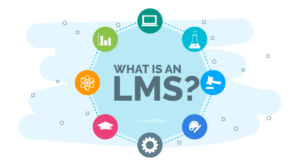5 Distance Education Trends that Will Shape 2021

E-Learning Tech and Trends to Watch in 2021
Distance education 2021 has risen to the forefront of how learning is done in the 21st century. Even before the Covid-19 pandemic closed schools, offices, and other places of learning, individual nations, as well as large investor groups, were investing heavily in the e-learning industry. The reason for such interest in e-learning is not based on the concept alone. It is more to do with the potential that e-learning has to grow and expand and become a regular part of everyday learning for everyone from students to professionals. With billions already invested in its success, e-learning can now access emerging technologies to expand its reach, improve its performance and revolutionize learning.
The 5 Ways Online Learning Will Change For the Better
More Customization
The pandemic pushed billions of students online. This dramatic increase in users has meant that digital education tools for teachers and students have been given a wealth of data to pore over to improve user experiences. While there has been some concern over the privacy and security of these data streams, the creators of these apps and platforms have increased their data-handling capacities to meet the rise in demand.
As there is no one-size-fits-all solution to the myriad of needs and specifications required of students, the designers of e-learning websites have been able to tweak their programs to include new tools. Many e-learning tools for teachers now offer things like auto-translation services or video-conferencing so they can better interact with students.
Document sharing programs like Lumin PDF have also kept up with teacher demands for increased document sharing capabilities with better integration with cloud-services as well as easy compatibility with Google Suite software. The level of customization will only increase to the point where these tools will become indispensable parts of online and in-person learning.
Artificial Intelligence in E-Learning
Artificial intelligence presents a unique opportunity to radically transform online learning. The global pandemic has forced educators to re-evaluate the orthodoxy of best practices in teaching and learning to better accommodate the new terrain of online study. To this end, governments and private enterprises have partnered in several countries to create learning networks that can go online should the occasion arise (ie. natural disaster, or another pandemic).
With the aid of artificial intelligence, though, these learning networks can offer advantages to both students and teachers. AI tutors can challenge online learners to think more creatively and critically, while also carrying out more conventional tasks like performing assessments or grading for overworked human teachers.
These electronic learning apps are already being deployed in China where students get personalized content recommendations after every lesson to broaden their understanding of a topic. Students are also assessed during a lesson to gauge what sections they most respond to and which ones they do not.
Remote Learning Is For Grown-Ups Too
When talking about remote learning during the Covid-era, the discussion invariably centers on school-age children or university students. But they are not the only demographic who now relies on online study. Even before the pandemic, e-learning websites like SkillShare and Coursera saw enrollments by the thousands.
Eager, young creatives, working professionals, and even retired people all signed up to learn things like coding, photography, or cooking remotely. These for-profit, MOOC sites also saw heavy investment last year, as investors saw the potential growth in this sector of the education industry during the pandemic and beyond. E-learning platforms will also become the preferred method for organizations to offer training options for their employees, even after the pandemic ends.
Demand Will Drive Innovation
As the traditional thinking about learning and teaching continues to crumble because of the pandemic, educators are now free to both push for more blended learning (online and in-person learning) and demand more from the developers of e-learning tech. Their demands – for more streamlined applications, seamless accessibility, and connectivity, more interactive features – will drive the e-tech industry to perform better on all levels to deliver a better product.
The pandemic has forced educators and Big Tech to talk to one another about how best to meet the unprecedented challenge of online learning for millions of students. With input from the professionals on the frontlines (teachers, namely) e-learning mobile applications have a unique insight into what the market needs, and they can tailor their software to better address those needs.
More Unique Partnerships
The pandemic has been monumental in its effects, but one positive effect has been the coordination on many levels of previously disparate groups. In the realm of education and e-learning, those new partnerships have proved both fruitful and effective. Across the world, educators have teamed up with organizations as diverse as social media companies, private and public broadcasters, and, of course, e-learning technology companies.
While the latter is a natural choice, schools pairing with social media companies like Facebook and Twitter to become vessels for educational purposes is once-in-a-lifetime. These strange bedfellows arrangements will not end once the pandemic is over. Educators now have the confidence and negotiating power to team up with whomever they want to secure better educational outcomes for their students.






